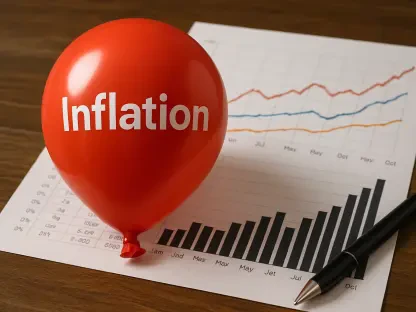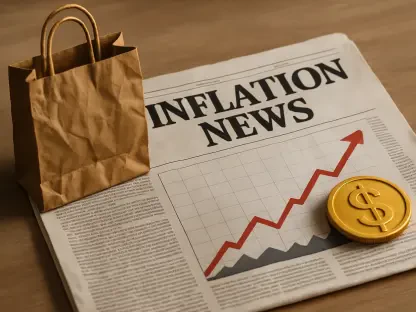Setting the Stage for a Transformative Energy Shift
In a world where global energy demand continues to climb at an alarming pace, the pressing challenge of balancing economic growth with environmental sustainability has never been more critical, especially as energy consumption tied to applications like transportation and heating rises by 1.8% annually. The inefficiencies of fossil fuel systems—which still dominate 80% of the energy supply—pose a significant threat to climate goals. This market analysis delves into how electrification, powered by renewable energy sources, is emerging as a game-changer in driving energy efficiency. By examining current trends, data, and projections, this exploration highlights the transformative potential of electric systems to reduce carbon emissions, lower costs, and reshape energy markets worldwide. The stakes are high, and understanding this shift is essential for stakeholders aiming to navigate the future of energy.
Diving Deep into Market Trends and Electrification Dynamics
Current Landscape: Energy Consumption and Fossil Fuel Challenges
The energy market today is marked by a historical dependence on fossil fuels, a reliance that has fueled a 30-fold increase in consumption since 1800. This growth, while driving unprecedented improvements in living standards, comes at a steep environmental cost. Final energy demand, encompassing direct uses such as industrial processes and residential heating, continues to expand, creating pressure on existing systems. Fossil fuel-based technologies, notorious for their inefficiency, waste substantial energy as heat during conversion, exacerbating climate risks. This persistent trend underscores the urgent need for alternatives that can sustain economic progress without compromising planetary health, setting the stage for electrification to disrupt traditional energy paradigms.
Efficiency Breakthroughs: The Rise of Electric Systems
Electrification is rapidly gaining traction as a solution, with electric systems demonstrating remarkable efficiency gains over conventional fossil fuel technologies. Electric vehicles (EVs), for instance, convert up to 90% of input energy into motion, a stark contrast to internal combustion engines that squander 75% as heat. Similarly, heat pumps offer a fourfold efficiency advantage over gas boilers, delivering substantial heating output per unit of electricity. Market adoption of these technologies is accelerating, particularly in regions where upfront costs are offset by long-term savings. As consumer awareness grows, the demand for efficient electric solutions is reshaping product offerings and investment priorities across the energy sector.
Renewable Integration: Powering Electrification with Clean Energy
A pivotal trend supporting electrification is the integration of renewable energy sources like solar and wind, which are becoming increasingly cost-competitive. Unlike fossil fuel power plants that lose 40-65% of energy during conversion, renewables produce minimal waste heat, enhancing overall system efficiency. Market data indicates a projected 24% reduction in global final energy demand over the next 25 years, even as GDP doubles, driven by these cleaner, more efficient sources. Transmission networks and storage solutions, such as advanced batteries, are also evolving to support this transition, ensuring reliability in energy supply. This synergy between electrification and renewables is creating a robust foundation for a zero-carbon market landscape.
Regional Variations: Adoption Patterns and Economic Impacts
Market dynamics for electrification vary significantly across regions, influenced by policy, infrastructure, and economic factors. In certain markets like China, EVs are already cheaper to purchase than traditional vehicles, driving rapid uptake among consumers. Conversely, in Europe and the United States, high costs for alternatives like nuclear power pose barriers compared to the affordability of renewables. Emerging technologies, including energy-efficient air conditioning systems with potential efficiency gains of two to three times current standards, are also influencing regional strategies. These disparities highlight the need for tailored approaches to electrification, ensuring that economic benefits and consumer savings are maximized in diverse market contexts.
Projections: Mapping the Future of Energy Demand
Looking ahead, market projections paint a promising picture for electrification’s impact on energy demand. Analysts anticipate a 36% reduction in primary energy demand—the energy required before conversion losses—over the coming decades, thanks to the minimal waste associated with renewable-powered electric systems. This forecast aligns with broader sustainability goals, as industries and households shift toward technologies that lower operational costs. However, achieving these reductions depends on swift deployment of infrastructure and supportive regulatory frameworks. The window for maximizing efficiency gains is narrowing, emphasizing the urgency for market players to act within the next critical period of transformation.
Reflecting on Insights and Strategic Pathways
This analysis of electrification’s role in driving energy efficiency reveals several pivotal trends that shape the energy market landscape. The stark inefficiencies of fossil fuel systems stand out as a primary driver for change, while the superior performance of electric technologies like EVs and heat pumps demonstrates clear pathways for improvement. The integration of renewables proves essential in reducing both final and primary energy demand, with projections indicating significant declines over future decades. Regional variations in adoption underscore the importance of localized strategies to overcome economic and infrastructural hurdles. For stakeholders, the implications are clear: investing in renewable infrastructure, incentivizing consumer adoption through subsidies, and prioritizing energy-efficient innovations offer actionable steps to capitalize on this shift. Moving forward, collaboration across sectors to build resilient, low-cost energy systems remains a vital consideration for sustaining this momentum and ensuring a sustainable energy future.









